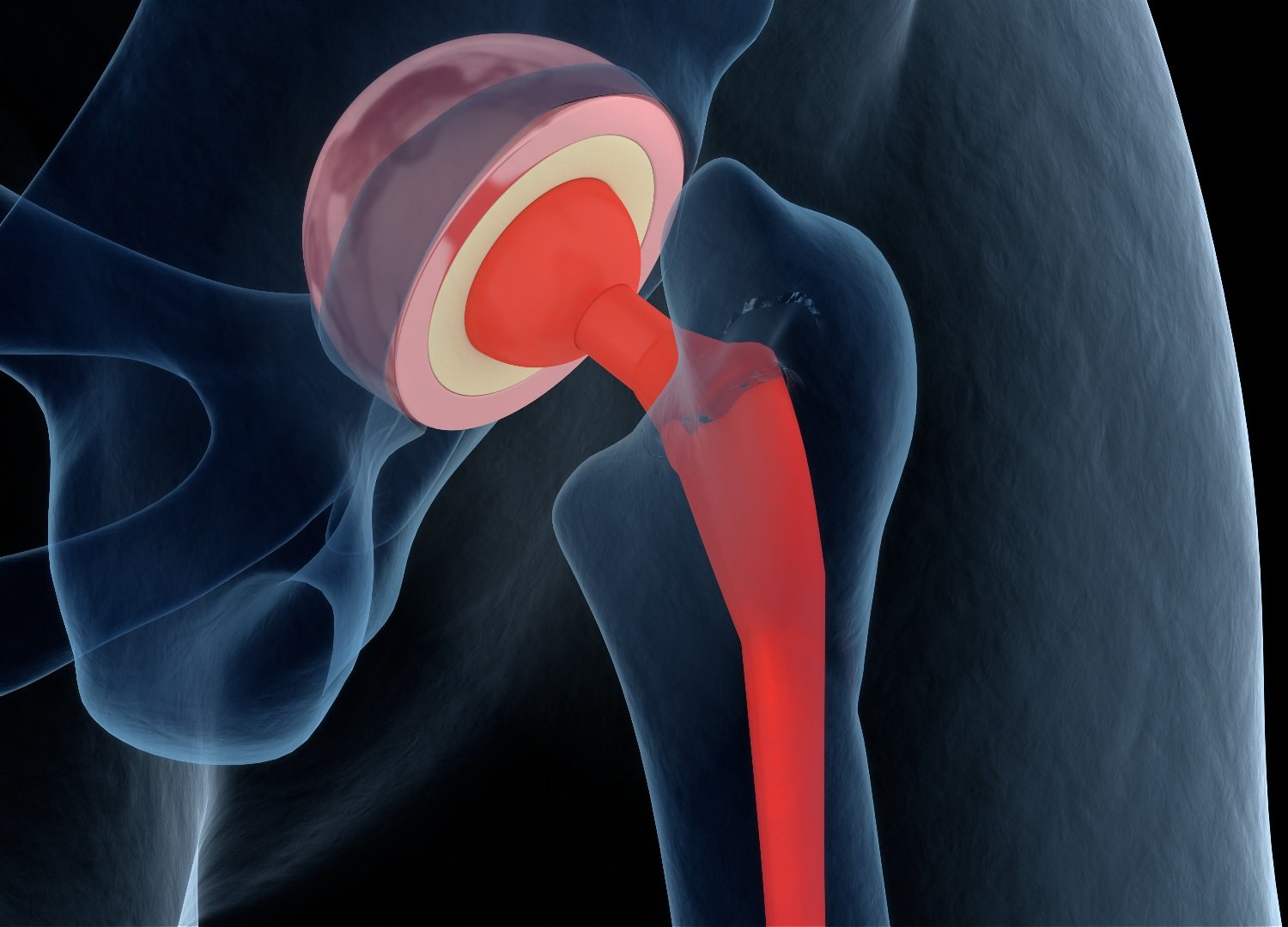Hip replacement
We depart from our usual topics to something more personal today. Wan Lik Hang writes from a London hospital having undergone a non-invasive operation for a hip replacement. Readers who may be thinking of something similar, or have friends who are, might be interested in his experiences.

Background
Total hip replacement is a common surgical procedure, where a damaged hip joint is replaced with an artificial one. There are several components, which can be made of different materials, with various ways of fixing them in place.
Hip replacement surgery is necessary when the hip joint is worn or damaged so that mobility is reduced, and the person is in pain even while resting. The most common reason for hip replacement surgery is osteoarthritis. Other conditions that can cause hip joint damage include:
- rheumatoid arthritis
- hip fracture
- septic arthritis
- disorders that cause unusual bone growth (bone dysplasia)
Non-invasive procedure
The standard hip replacement involves making a large cut (usually 20–30 cm long) over the hip. However, minimally invasive hip replacement usually involves making a single, smaller cut of typically 10 cm or less. Alternatively, cuts are made at the front and back of the hip. The procedure is carried out using specially designed surgical instruments, with the patient under general or epidural anaesthetic (a local anaesthetic injected into the spine). Care is taken to avoid damage to the muscles and tendons around the hip joint, although some muscles may need to be divided. The surgeon may use image guidance (for example, computer navigation) to improve precision.
A socket is fitted into the hollow in the pelvis. A short, angled metal shaft (the stem) with a smooth ball on its upper end (to fit into the socket) is placed into the hollow of the femur. The cup and the stem may be pressed into place or fixed with bone “cement”.
A patient spends one to two days in the hospital versus three or four days with traditional surgery. Total recovery time is about four weeks rather than eight weeks with the traditional approach.

The femur and the ball to be inserted, left and centre, and the socket to receive the ball.
Global experience
Hip replacements are relatively common. According to the Agency for Healthcare Research and Quality more than 450,000 total hip replacements are performed each year in the United States. In the UK around 160,000 hip and knee replacements take place each year. The waiting time for a procedure in some UK public hospitals can be over one year, such is the demand.
Hip replacements can last over 25 years in many cases. In a study in Scandinavia completed in 2019, researchers found that, after 15 years, 89.4% of hip replacements had survived. After 20 years, 70.2% were intact. After 25 years, 57.9% were still intact.
So much for the science. What is Wan Lik Hang’s experience so far?
Journal
1930, Sunday 16th January 2022.
Up at six tomorrow for the taxi to the hospital. I’m not exactly feeling nervous but a bit tense. I want to get this over successfully and get back to what I used to be able to do. Last meal taken – latest 2000. Not sure how much I will sleep but that’s not so important. Plenty of time to rest in hospital. Family and friends are so supportive, but we face these things on our own.
0800 Monday 17th
Crazy taxi ride in (not so) empty London streets to hospital. Arrived at reception and waited for my room. Room 207 has a river view of the Thames. Very comfortable space, quiet and clean. Wi-fi works well and have read my emails and papers. It’s like a good hotel without the heavy luxury carpets!
Nurses doing blood tests on me, giving me socks to wear, gown, a PCR test and lots of forms. (I’ve joined the hip replacement research group – whatever that is). After a new x-ray, I am to have a form of epidural (spinal) injection with a sedative. Then it should be quite quick, and I can be up and walking this afternoon.
1400
Operation went well. Fast asleep all the time. One hour in post operation recovery and chatting to staff. I cannot feel my lower half as it is paralysed completely. It’s a bit alarming. One feels for those who are really paralysed. I know my legs and feet are there, but I cannot move them at all however hard I try. It took several hours to get any feeling at all.
I’m on a range of drips and drains with fluids flowing in and out of me on both sides.
No pain of any kind.
1600
Met an efficient and business-like physiotherapist who arrived with a pair of crutches so I could try walking. Only three hours after the operation to replace my hip! Amazing. I was very wobbly to start with but got better very quickly. Walked around a bit and then back to bed with drips and antibiotics.
1800
Got up and sat in chair for supper. Not allowed even one glass of wine! Good food and right amount. Moving around is much easier but no bowel movements of any kind yet, even though the anaesthetic is wearing off. As a result of reducing analgesics, there is some minor joint pain now and getting worse. In some ways it makes me feel better to have the pain as at least the drugs are wearing off.
2230
Wondering about sleep tonight and trying not to bother! There are cuffs that pump up on both legs to ward off embolisms and blood clots. The pump is noisy and uncomfortable and noisy but needed tonight. I thought I’d drift off but, in the end, I got the nurse to take off the cuffs. So much better and feel less stressed anyway. Heard a clock striking every hour. One can’t often say one listens to Big Ben all night!
To be continued…
We’ll have more next week on the second day, the departure from hospital and life in ‘safe mode’, recovering from hip replacement at home.
Worked on the article:

Wanlikhang






